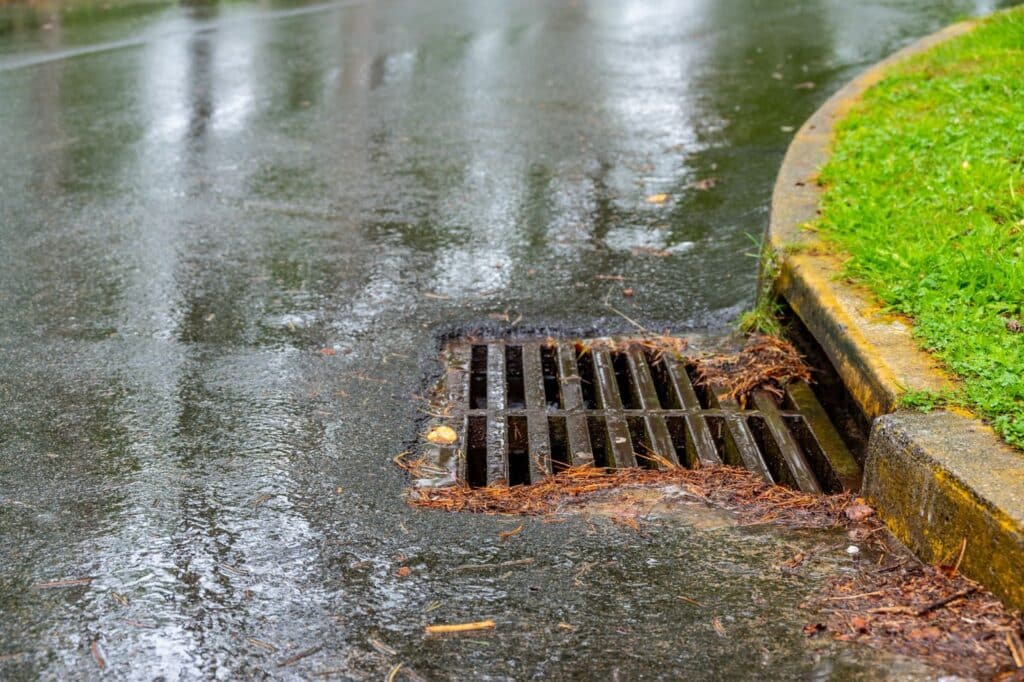Stormwater Management: Choosing the Best Products to Reduce it

Many of us have never heard of stormwater management. Even if we live in areas with particular stormwater management rules, we may be unaware that they are being implemented and followed.
What is stormwater management? It’s the practice of using stormwater control devices to control water that runs off of a given surface, for example, after a big rain.
Experts have coined two terms — pervious and impervious surfaces — to talk about whether water can drain from materials like concrete, stone and brick. As we develop more of our natural land, stormwater management becomes an ever-greater concern.
Why It’s Important
Stormwater management and stormwater control devices are important for several major reasons.
First, this prevents nearby homes and buildings from being flooded. In cases where someone is irresponsible with stormwater management, others may pay the price in terms of water damage, mould and other effects of flooding.
Beyond that, poor stormwater management can allow key nutrients and soil to erode into waterways. That’s not good for the land, and it’s also not good for the water. So engineers and experts try to set up stormwater control devices and systems that keep soil and sediment where they are supposed to be, instead of flowing to some other destination.
Stormwater management with stormwater control devices can also help with toxins in the groundwater. When toxins and contaminants can be filtered and captured, and removed from the stream, that can provide its own important health and safety value. Here are some of the stormwater control devices that engineers use to direct stormwater and protect natural systems.
Best Products for Stormwater Management
Coir Logs
Coir logs are excellent sediment and erosion protectors and general stormwater control devices. They have the benefit of being made from all-natural substances, namely coconut fibres.
These types of manufactured materials are natural, biodegradable, and good at controlling water flow.
They can be used for drain protection and riverbank stabilization and other related uses, and they are relatively durable and stand up well to some kinds of environmental pressure.
Drain Filters
The drain filter, as one of the primary stormwater control devices in many plans, is part of the infrastructure that will take in stormwater and related elements, to get it where it needs to go for treatment or absorption.
Here, the filter traps contaminants and removes them from stormwater, in order to provide a clean result moving from a point of origin. The contaminants and debris are captured and can then be dealt with separately.
For stormwater or accidental spillage, drain filters are useful in these kinds of environmental protection systems.
Drain Seals
Sealing around a drain is also a key part of stormwater management. Drain seals made of polyurethane can form the tight seal that is needed to keep inundated surfaces from leaking. Reversible and reusable drain seals provide chemical resistance for controlling the flow of liquids in a particular space, and these stormwater control devices help in sealing in elements that you don’t want running away as runoff.
Silt Bags
These stormwater control devices are made with a mesh fabric and are durable for outdoor elements. They can be used for drain protection and the control of stormwater at a source point.
In their own way, silt bags filter runoff and prevent erosion that can strip soil from a particular geographic location over time.
Silt Curtains
The silt curtain can be used to control aquatic plants and algae. It can also control sediment and runoff. These can be important stormwater control devices for longer areas where there’s a more significant need for boundary protection.
The silt curtains as stormwater control devices are often connected to dredging equipment and use ballast for support in operational use.
It can also be used in the context of waterway management, for example, on dams or streambank projects.
Silt Socks
These erosion and sediment handlers can be filled with stone or gravel to help capture elements of runoff and provide erosion control.
The above stormwater control devices are useful as part of top-level planning for the environmental outcomes that support soil integrity and clean waterways.
Public administrators and others have their eye on these stormwater control devices and other innovative stormwater management tools to put processes in place that monitor the erosion of soil, the contamination of runoff and the infiltration of unwanted elements in upstream areas of waterways.
Summary
Stormwater management projects can cost quite a bit of money and involve many different types of infrastructure and stormwater control devices. Municipal planners may have consultants on board and work with heavy equipment firms to come up with infrastructure results that will handle the stormwater as it moves through a particular community. Contact Ecospill to find out more about how to set up systems that will help to handle the stormwater that can run in various ways that compromise both local soils and waterways.
